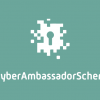What is county lines?
County lines is the police term for urban gangs supplying drugs to suburban areas and market and coastal towns using dedicated mobile phone lines or “deal lines”.
The gang activity is highly associated with violence, drug dealing and exploitation; having a devastating impact on young people, vulnerable adults and local communities. Gangs will use children, and vulnerable people, to move drugs and money, criminally exploiting them (CCE); they will also seek to establish a base in target locations, typically taking over the homes of local vulnerable adults by force or coercion – this is referred to as ‘cuckooing’.
County lines is a major, cross-cutting issue involving and linking into:
- drugs
- violence/weapons
- gang affiliation
- criminal and sexual exploitation
- modern slavery
- missing/trafficked
- safeguarding risks
Who is vulnerable to county lines exploitation?
The national picture continues to develop but there are recorded cases of:
- Children as young as 10 years old being exploited to courier drugs out of their local area
- Young people of all genders are being involved: av. age = 13-17 years old
- Gangs targeting children not of the ‘stereotype’, perceiving likely to evade police detection.
- Increased use of social media to make initial contact with children: ‘grooming’
Signs to look out for
Young people involved in county lines may exhibit some of the signs listed below, either as a member or as an associate of a gang dealing drugs. Any sudden changes in their lifestyle should be discussed with them.
- Persistently going missing from school or home and/or being found out-of-area
- Unexplained acquisition of money, clothes, or mobile phones
- Excessive receipt of texts /phone calls
- Relationships with controlling /older individuals or groups
- Leaving home/care without explanation
- Suspicion of physical assault/unexplained injuries
- Carrying weapons
- Significant decline in school results/performance
- Gang association or isolation from peers or social networks
- Self-harm or significant changes in emotional well-being
What to do if you are concerned
Practitioners working with a young or vulnerable person at risk of county lines exploitation should follow their local safeguarding guidance and share this information with local authority social care services.
The first step is usually to contact your designated safeguarding lead (DSL) within your organisation. If you don’t know who this is, refer to your manager. Your DSL has the responsibility for linking in with your local authority’s social care services.
If you believe a person is in immediate risk of harm, you should contact police.
The flow chart below outlines processes to support decision making.
Education Resources, Support Services and Linked Topics
This section provides information about resources and support for professionals, parents and young people specific to County Lines, along with related topics such as knife crime and gangs. All information and links can be found under the relevant tab below:
- Local & National Documents
- Education Resources
- Support Services
- Linked Topics
- PSHE Criteria KS1-2
- PSHE Criteria KS 3-4
- RSE Secondary
Information in this section includes the Home Office National Guidance and the local 4LSCPs in Hampshire, Isle of Wight, Portsmouth and Southampton (HIPS); all guidance sets out to ensure that police, local authorities, education, health and other agencies are working together to tackle County Lines and safeguard children and vulnerable adults. Documents are accessible via the relevant links below.
Fearless have developed bespoke County Lines resources for KS3 and KS4, and The Children’s Society provides resources for parents in a wide range of languages – these are accessible via the relevant links below.
Dedicated support, reporting and referral services are available from a range of organisations, including NSPCC, Fearless/Crimestoppers and Safecall: a missingpeople.org and St. Giles Trust partnership providing bespoke services for families and professionals; plus a safe, non-judgemental phone service for young people – service posters and link to the website are accessible via the link buttons below:
County Lines is significantly linked to the carrying of knives/weapons and gangs; more information and resources for KS2, KS3 and KS4/5 can be found via the link buttons below:
H42. about the importance of keeping personal information private; strategies for keeping safe online, including how to manage requests for personal information or images of themselves and others; what to do if frightened or worried by something seen or read online and how to report concerns, inappropriate content and contact.
H47. to recognise that there are laws surrounding the use of legal drugs and that some drugs are illegal to own, use and give to others.
H19. the consequences of substance use and misuse for the mental and physical health and wellbeing of individuals and their families, and the wider consequences for communities.
H20. wider risks of illegal substance use for individuals, including for personal safety, career, relationships and future lifestyle.
H26. information about alcohol, nicotine and other legal and illegal substances, including the short-term and long-term health risks associated with their use.
H27. the personal and social risks and consequences of substance use and misuse including occasional use.
H28. the law relating to the supply, use and misuse of legal and illegal substances.
H23. strategies for identifying risky and emergency situations, including online; ways to manage these and get appropriate help, including where there may be legal consequences (e.g. drugs and alcohol, violent crime and gangs).
R46. strategies to manage pressure to join a gang, exit strategies and how to access appropriate support.
R45. about the factors that contribute to young people joining gangs; the social, legal and physical consequences of gang behaviours.
L19. to recognise financial exploitation in different contexts e.g. drug and money mules, online scams.
- the facts about legal and illegal harmful substances and associated risks, including smoking, alcohol use and drug-taking.
- the facts about legal and illegal drugs and their associated risks, including the link between drug use, and the associated risks, including the link to serious mental health conditions..
- the law relating to the supply and possession of illegal substances.







